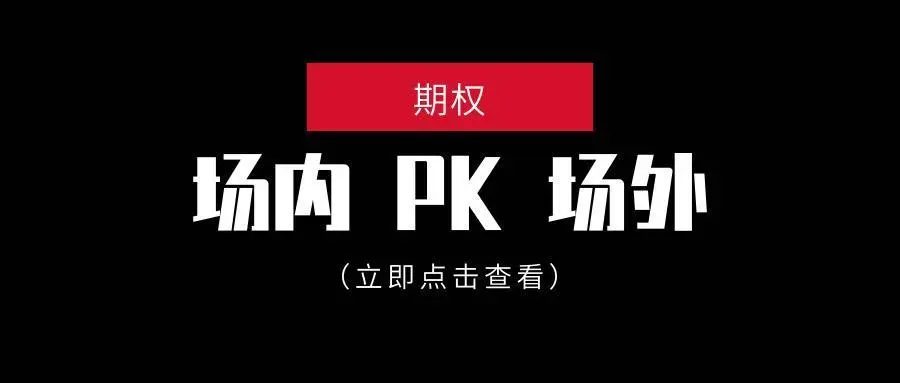Stock options are a type of option. They are a right, not an obligation. This right is to purchase or choose not to purchase a certain number of company stocks at a pre-agreed price (exercise price) within a certain period of time. The following is an introduction to options and What are stock options? Here comes the easy-to-understand explanation! This article comes from: Option Sauce

1. What is an option? An easy-to-understand example.
The underlying assets of options refer to the assets chosen to be purchased or sold, mainly including stocks, government bonds, currencies, stock indexes, commodity futures, etc.
For example, suppose there is a house priced at 10 million, which can be paid in full at once or delivered one year later (off-plan).
If you choose to pay the full amount in one lump sum, you do not have the right to purchase options; if you choose to hand over the house after one year, it is equivalent to purchasing an option on the off-plan house. You can purchase the house at the agreed price in the future, or you can choose to give up the purchase.
2. What are stock options? Give examples that are easy to understand
Stock options refer to a company granting its employees the right to purchase a certain share of company stock at a fixed option price within a certain period of time .
Simply put, if a company grants employees stock options, the employees can purchase company stock at a fixed price at some time in the future.
For example, if a company's current stock price is 10 yuan, employees can purchase 100 shares of the company's stock at a price of 10 yuan in the future.
If the company's stock price rises to 20 yuan in the future, employees can sell these 100 shares at a price of 20 yuan, thereby earning a profit of 1,000 yuan (not taking into account handling fees and other expenses). Therefore, stock options can allow employees to share more benefits in the company's performance growth, and can also motivate employees to work harder for the company.

3. Easy-to-understand examples of call options (long) and put options (short)
Options in the eyes of ordinary people usually refer to "call options".
For the sake of simplicity, I will only explain the single direction of "call option". I am not a professional. Please point out any fallacies.
Let’s define it first:
A call option is the right to buy* a certain number of shares at a specific price within a certain period of time.
Let’s take another simple example:
There is stock ABC, the current share price is $100,
You have 1 call option on this stock (1 lot represents 100 shares), the exercise price is $100, and it expires in one month.
Then, one month later, after the option expires, you have two options:
1. The stock price rises to $120, then you can exercise the option and buy 100 shares at $100 per share.
Then sell it at the market price of $120, so you can make a profit of (120-100) x 100 = $2,000;
2. If the stock price drops to $90, or is still $100, then the option in your hand is worthless.
Very simple, right? The basic concept is this.
Of course, in actual operation, options are not given to you for free, and options also have a selling price, but these are things for another day.
A put option is the opposite of a call option, which gives the holder the right to *sell* the stock at a specific price.
----------The answer is completed, the following are other groceries, you can continue to read if you are interested------------------------------ --------------------------

1. American options: Option holders can exercise their options in advance before expiration.
2. European options: The option holder cannot exercise the option before expiration, but must exercise it after expiration.
The division between European and American options has nothing to do with region. In fact, most of the options traded in the European market are also American options.
Also, a reminder to friends who are preparing to trade U.S. stock options:
The expiration date of options in the U.S. stock market is the third Friday of the option expiration month and will be exercised on the following Monday.
For example, if an option expires in August, the specific date is the third Friday of August.
After the option expires,
For example, if your call option makes a profit (for example, the stock price is higher than the call option exercise price), then the option clearing agency will exercise the option for you, and your account will buy stocks at the exercise price, so the cash will decrease and the stocks will increase.
If there is insufficient cash in your account to pay for buying stocks at this time, the brokerage firm will provide financing to you. If the cash in your account is 0 at that time, it will definitely cause the brokerage firm to issue you a "margin call" warning, and the consequences will be your The account enters the status of "can only perform liquidation operations".
At this point, you have two choices:
1. Sell stocks;
2. Deposit cash as required.
In short, either pay back the money to the brokerage, or pay more margin to tell the brokerage "don't be afraid."
By the way, I made this stupid mistake when I played options for the first time, which resulted in me raising $18,000 to exercise the option to buy the stock. Fortunately, the stock rose sharply that day, and it changed hands immediately after the market opened, selling it for $19,000, and then reported it to the brokerage customer service Call: Look, I don’t owe you any money anymore. Can you unlock my account? After the customer service girl unlocked it for me, she kindly reminded me: Sir, please be careful next time. She must have seen too many novices like me who are bold and careless. . .